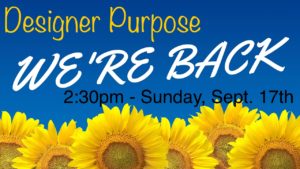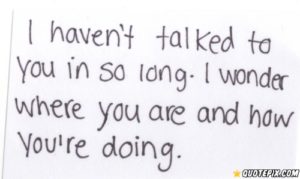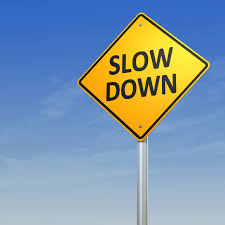This was the topic of our Designer Purpose session today. But before we talked about how we should interact with others, we discussed how important it is for us to be our own best friend FIRST. You never really can get relationships right if you can’t get along with you. If you can’t appreciate yourself, encourage yourself, take care of yourself, challenge yourself, grow yourself, and forgive yourself – you will have a hard time attracting people who will do that for you. Unfortunately, many of us have a tendency to get into relationships because we’re looking for someone to validate us. That’s backwards. Instead, we have to learn how to be comfortable being with ourselves first. We need to be okay with being by ourselves until we have chosen the right people to be around us. I like to say, “If you don’t treat you right, why would you expect someone else to?”
At the end of this post is an audio clip that we referenced during our session. While the focus of the interview was supposed to be on marriage, the first 20 minutes or so really spoke to someone who had to learn to love themselves and live out their own purpose before they could successfully bring someone else into their lives. I hope you find it helpful.
And now, the 4 Stages of Friendship.
THE ACQUAINTANCE Time Frame: approx 6 months.
It takes time to get to know someone before they can be called your friend. Without this we can get too close to people too fast, before we know what we really need to know about them. I always say, “it takes 6 months for crazy to come out”. This just means you have to take your time to find out how people really are, and whether or not you want to invite their potential issues into your life. What are potential issues? Well, first of all, nobody is perfect. Personally, I have some of these “issues” myself. That being said, before I start exchanging phone numbers and promising to do things or go places with people, I need to find out if they are:
- Controlling – they always want you to do what they want to do.
- Needy or Irresponsible – they always have to be rescued.
- Unstable – happy one day; sad the next. Positive one day; hateful the next. Hard to know how they’ll be tomorrow…
- Just not your type – we just have completely different likes or interests.
- A User – they always want you to give and do for them, but they’re never available.
- Offensive – people who have a bad reputation will drag you into their drama. Guilty by association.
- Haters/Gossipers/Rumor Spreaders/Complainers – people who are never happy and don’t want to be.
- Unmotivated – nobody is “up” all the time, but this type of person just doesn’t want to do better.
- Illegal – um, you definitely want to know as soon as possible if someone is doing something that will put you both in jail.
An Acquaintance is someone who you’ve seen or heard about. You learn his/her name and greet them by name the next time you meet. You ask and answer appropriate questions and are a good listener. This person is not yet a friend, and it’s best not to call them that. They’re just someone you’re beginning to know about. You only see this person at your original meeting place (school, work, the gym,etc). Conversation remains surface level only, meaning, you don’t have to know their business and they don’t need to know yours.
THE CASUAL FRIEND Time Frame: Approx. 6 months
A Casual Friend is someone who you’ve talked to enough to know some of their strong points (good with animals, understands Math, runs track, etc.). Over this 6 month time period, there are intentional interactions every once in a while – invitations to hang out – that give you more information about the person. You learn more about things you have in common. Ask God and people you trust whether or not this relationship should be taken to the next level. This is the time to decide about the red flags (issues) above, and determine whether or not you’re willing to deal with it on a regular basis.
THE CLOSE FRIEND Time Frame: Grows or Stabilizes over time
If you decide that someone will be a Close Friend, you have seen the potential in their life and where they are headed for in the future. You both talk about goals and dreams and make a decision to help each other achieve them. You have similar character traits and people talk about you and your friend as a good match. You “speak” into each other’s lives (give each other advice), trying to help each other make the best decisions. You become a “habit” in each other’s lives. You agree on most things and agree to disagree on others. Some close friends may return to casual friends, depending on lifestyle or stages in life. A select few friends will become intimate friends.
THE INTIMATE FRIEND Time Frame: 4 Life
An Intimate Friend almost knows as much about you as you know yourself. You learn how to help each other during good times and bad. You (both of you) can see which attitudes and habits need to be changed and are willing to work towards those changes. You are not afraid to be honest and open with each other – you know your business is safe with the other person. You are accountable to this person. You make a commitment to be faithful, loyal, and available to one another. You accept one another as you are – unconditionally.
Knowing that there are stages is very helpful, because you can track your progress with people instead of jumping headfirst. But remember, people will only treat you as well as you treat yourself. I hope this helps you and I hope you share this information with your friends and loved ones. If you’ve been able to apply any of this, please come back an comment on it. You never know who you may help.
As promised, the audio clip: http://www.focusonthefamily.com/media/daily-broadcast/uncovering-the-secrets-of-being-a-happy-wife






 Take a quick minute and do a self-survey. It is vitally important to your purpose that you give yourself permission to regenerate: refresh, relax, relate, and release. All of us need that girlfriend or two who we can be real with. Those relationships are precious and deserve our attention. Is it time to make a phone call? Don’t give in to the temptation to isolate yourself and suffer unnecessarily. God made women with a need for communication, so take a minute and send a quick text – “Girl, let’s get together!” She probably needs it just as much as you do…
Take a quick minute and do a self-survey. It is vitally important to your purpose that you give yourself permission to regenerate: refresh, relax, relate, and release. All of us need that girlfriend or two who we can be real with. Those relationships are precious and deserve our attention. Is it time to make a phone call? Don’t give in to the temptation to isolate yourself and suffer unnecessarily. God made women with a need for communication, so take a minute and send a quick text – “Girl, let’s get together!” She probably needs it just as much as you do…



